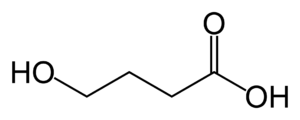Defending The Narcolepsy ”˜Date Rape’ Drug
`
It didn’t take long after a panel of experts nixed Jazz Pharmaceuticals’ effort to sell its narcolepsy drug Xyrem as a treatment for chronic pain before arguments streamed in that this dangerous street drug would never be approved in the current environment.
After all, if Xyrem got knocked by 20 out of 22 advisers to the Food and Drug Administration as a treatment for pain, how could it be something regulators could OK just to ease some excessive daytime sleepiness? This is a variant of the “aspirin-could-never-be-approved-today” argument, and I’d be highly skeptical.
Honestly, there is no way Xyrem didn’t deserve the approval it got in 2002, and comparing what happened then to the vote that occurred on Friday sheds light on what Jazz may have done wrong this time around and on Xyrem’s prospects for eventually getting approved as a treatment for the chronic pain condition, fibromyalgia.
When Orphan Medical, which was later bought by Jazz, filed its new drug application with the FDA, the street drug gamma-hydroxybutyric acid (GHB) was in the news as a date-rape potion and drug of abuse. This law school paper, found via Google, provides a good recap of the controversy at that time.
The FDA advisory panel that reviewed the application in 2001 (see the transcript here) was every bit as worried about abuse as the one that met on Friday. They also were not completely convinced on Xyrem’s efficacy ”” a key decision on whether Xyrem prevents a condition called cataplexy was decided by a single vote.
What’s very different, though, is not just that narcolepsy is rare but that severe cataplexy afflicts only some narcoleptics.. It is severe, hard-to-treat, and afflicts a limited number of patients. This is a condition that causes the sudden onset of sleep paralysis ”” the loss of muscle tone that occurs when we sleep ”” during waking hours, often as a result of strong emotions. Cataplexy can be just muscle droopiness in a patient’s face, but in more severe cases the sufferer collapses.
Sleepiness can be counteracted with stimulants such as Provigil or Ritalin. For cataplexy, the option was to use antidepressants. Xyrem provided a different way to treat the disorder. Narcolepsy is actually a dysfunction of sleep, in which patients fall into dream sleep far too fast. Xyrem apparently makes the sleep better. The results can be fairly impressive. This study from Orphan Medical shows a 57% to 87% reduction in cataplexy for patients on Xyrem, depending on the dose.
Xyrem’s approval in 2002 was only for narcolepsy with cataplexy. This is an extremely narrow population for whom the benefit was unique, and potentially a big deal. It’s also a small, clearly defined population. Xyrem was distributed from a single pharmacy to prevent abuse.
In order to move forward, Jazz probably should identify subsets of patients with fibromyalgia who would most benefit from having this treatment available. It needs to abandon the idea that it could sell Xyrem for fibromyalgia in a different dose with a different brand name, both of which increase the odds of deadly overdose. But as the comments to my last post illustrate, this is a treatment that is a very big deal to some patients.
One other point: the fears that this drug will get out of control is based on the fact that prescription drugs are commonly abused, for instance, on college campuses. But GHB can be made from chemicals that are pretty easy to obtain, using instructions you can find by searching the internet. It seems easier to make than, say, Vicodin. It was clearly available long before Xyrem hit the market. Is this really a drug that is going to seep onto the street when it is going to be both expensive and hard-to-get?



